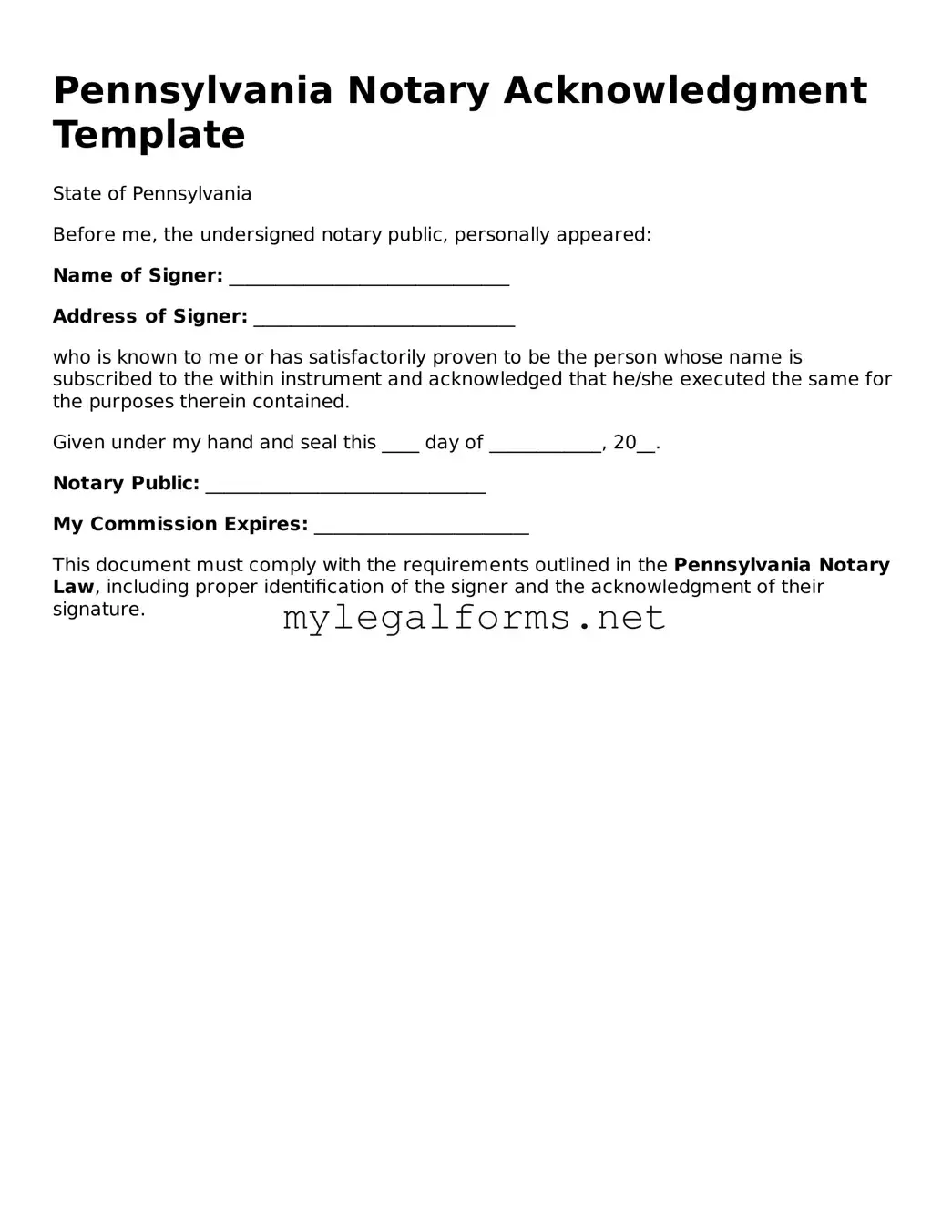Notary Acknowledgement Document for Pennsylvania State
The Pennsylvania Notary Acknowledgement form is a legal document that verifies the identity of a signer and confirms that they willingly signed a document. This form plays a crucial role in ensuring the authenticity of signatures in various legal transactions. Understanding its purpose and requirements is essential for anyone involved in notarized documents in Pennsylvania.
Launch Notary Acknowledgement Editor
